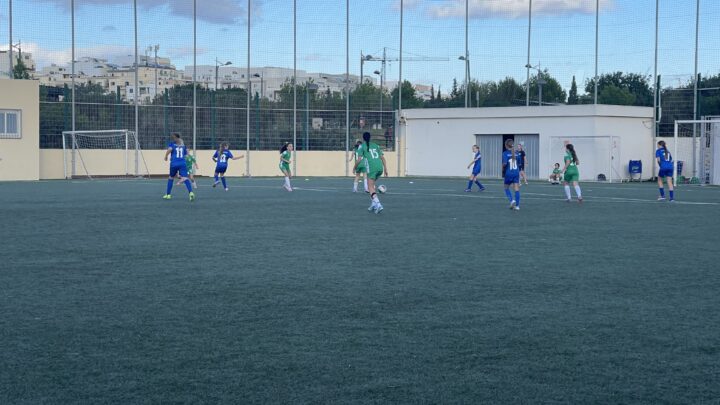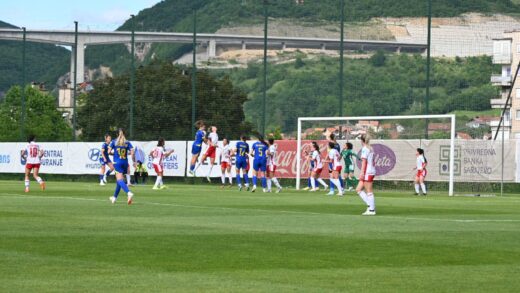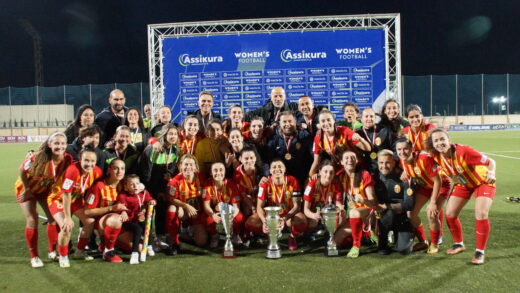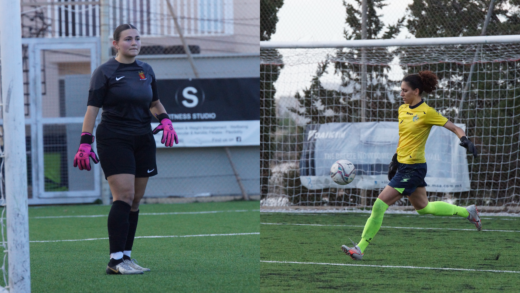The Malta Football Association launched an U13 girls development tournament at the beginning of the season. Involving eleven teams, including six new sides among which feature two Gozitan outfits, the numbers are encouraging. The Sporting Fan spoke with several of those involved to get their take on the impact of the league, their work in developing players, controversial elements and the role of parents.
The League Setup
The 2024/25 season has made several first in the women’s game in Malta. One element that has flown under the radar, but is an important pillar set by the Malta Football Association is the introduction of a women’s development league at U13 level.
Played at the Marsaskala pitch, matches are played on Saturday every two-weeks, in a 7-a-side format. Each fixture is played in two halves of thirty minutes, with one afternoon of football featuring up to six matches. The matches are not officiated by referees, an element that is often seen at grassroots level abroad, though perhaps considered strange in Malta.
The concept of the league is to foster healthy competition in preparation for the BNF U16 League. However, the Women’s Department within the MFA has maintained that the league was introduced with a focus on developing players, rather than chasing silverware which is to come at a later stage.
Each matchday is administered by a venue manager, while the Malta Football Association also provides a first-aider. Coaches from the ‘Inhobb il-Futbol Foundation’ (IFF) also rotate in presence, observing progress of players. Their presence is relevant, when considering that several players also train with the Foundation throughout the year.
While at more senior level players train with national teams only during official international windows, at these tender ages, the method is different. Promising Maltese talents also train with the Foundation throughout the year and feature in another league as an IFF team on Saturdays when the U13 women’s development league is not in action. In this regard, the development at grassroot level is truly shaped by clubs and the Association in tandem.
The Teams
There’s positives in the number of teams participating in the league that rack up to eleven sides. Among the more established names who feature also at senior level are Birkirkara, Hibernians (with two teams), Swieqi United, Lija Athletic and San Gwann.
Joining them are St. Georges, Melita and Sliema Wanderers, all of whom gave some insight into the encouraging numbers coming up their ranks.
Sliema Wanderers are led by Fernando Patino, who took charge of the women’s U13 team three years ago, following three years with the boys at the club. It is one of the teams which does not yet have a presence at U16 to senior level, but is working its way from the ground up.
Patino spoke about his work within Sliema Wanderers and the relevance of this development league, “I am currently coaching the team by myself, focused on developing these seventeen girls. It has its challenges. However, having this league is very important. I believe that age groups should have one match per week from U6 to U13. Like this players train with a target and there is motivation.”
There’s more positivity also coming from Gozo, with S.K. Victoria Wanderers also featuring as a team under their own namesake, although linked up with Lija Athletic at U16 levels under SK Lija. Kercem is also in the fold with their own team.
Many coaches welcomed the involvement of new clubs who are bringing new ideas and more diversity into the game. Having shrunk from more than twenty clubs to just eight at senior level, such numbers give a positive outlook, but only if they can be developed and successfully maintained at the level required.
In fact, Josef Dalli of St. Georges spoke highly of the importance of the league and the positive numbers the club is gathering, “It is the first team in the Cottonera to have a women’s team. Our project is based on three years. We have around 35 girls training with us, and we’ve only been running the project for a few months. This year we started with the U13 and we are already seeing good qualities from our players. It is my aim, our committee’s aim and the club’s aim, to keep welcoming girls into the team so that they can build themselves into athletes and take all the positives that playing sport brings with it.”
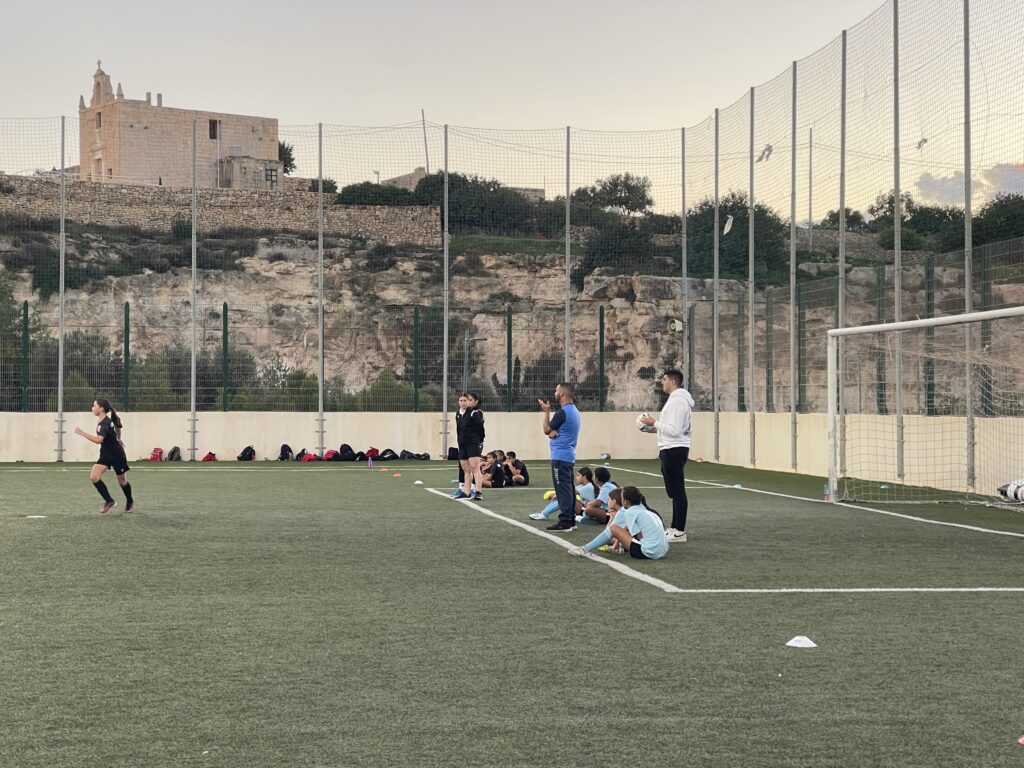
The numbers of players involved at clubs varies. On average teams mentioned between 15 and 22 players. Hibernians are one side that has a large group, and in fact field two teams in the league. However, Chloe Ellul explained that the players train together in sessions, but that the establishment of two teams enables more players to play.
Melita have among the largest of groups, with around 50 girls in their academy. Simon Montagno started the academy four years ago, “We started with six players, and today approach the fifty. We have players who are thirteen years who have been building over time who are playing in the U16 league, a group playing in the U13 league and then we have a few who are preparing to play in the leagues because they are still under age.”
Impact On Enthusiasm For The Game
Several coaches were probed on the differences they see in the enthusiasm displayed for training and the game in general since the introduction of the league.
Kylie Pantalleresco leads Lija Athletic’s team with the support of fellow senior team player Edera Marmara’. Pantalleresco spoke of the advantages that the introduction brings to these new players as opposed to her own development. “It is a very good thing. When I was young there was the IFF league, but I used to play with Mosta boys because there wasn’t a dedicated girls setup. I was twelve and played with the U16s, so that was a big jump that I had to make. This league gives these girls the chance to develop alongside girls of their own age.”
This was underscored by Hibernians’ Chloe Ellul, “Obviously there are some girls who play within the IFF team and maybe others who also play with boys. However, this league gives players the chance to play in a girls team competitively.”
San Gwann’s Shania Borg praised the initiative, “It’s good for players to play in this league in preparation for the U16 league, which is then more competitive. At ten, eleven years of age, this U13 league starts to build their understanding of the competitive side of football and the idea of a win or a loss instigates a bit more motivation in them, but still having the bigger focus on developing their skills.”
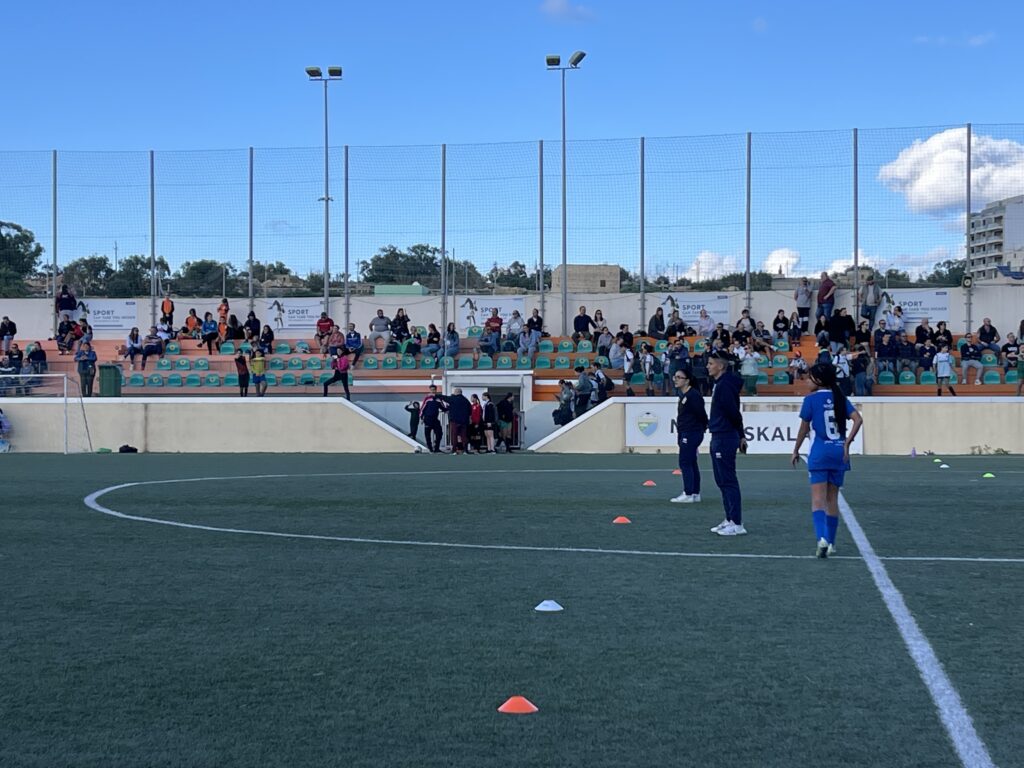
Swieqi United’s Giulia Borg, was of a similar mindset. She said, “The introduction of the league in a sense makes coaching easier because automatically players have a real test in the match. Having matches means that you may show exercises in training and they players will learn to adopt that into the match. Prior to having the league, we organised friendlies against boys, but this is not always ideal in the sense that boys may not be so structured in positioning so it tests different things. Having this U13 league is better to build players toward the U16 one.”
Lija Athletic’s Kylie Pantalleresco noted the matches give coaches a real measure of how much players are absorbing in their training sessions. “At this level we do not focus on the score. However, having an element of competition is good to motivate. In turn, the match allows us coaches to see how much players are able to apply the training instructions in a competitive setting against a player they haven’t met.”
Birkirkara’s side are led by Clayvin Camilleri and Maltese veteran Charlene Zammit, with the latter leading the Birkirkara girls academy sector. Camilleri is into his second year coaching in the women’s game, following two years focused on just boys. “I would say the girls always showed enthusiasm, but this league shows them that there are more girls playing the game. Teams are coming into the matches with excitement and in fact I hope we get to play a match per week in the future, rather than once every two weeks. However, of course we must take care to make sure that there are enough players to actually handle that.”
Josef Dalli of St. Georges also praised the willingness from the organisational aspect to listen and implement changes to enable improvement of the league in its early stages.
While praising the organisation, the St. George’s coach warned of the need to consider on the limits of players within a single team or finding ways to ensure that players get their fair share of match time. He noted that when clubs accumulate big numbers there are several players who are not getting the match practice they need at this age.
Coaching Setups & Player Development Philosophies
As the game develops in Malta, the number and quality of training sessions within senior teams is increasing, with several teams training almost everyday. At grassroots level, the training sessions are less frequent. However, the majority of the teams spoke about two to three training sessions per week, depending on whether it is a match week or not. Some teams organise sessions with boys’ teams within the club intermittently with the aim of changing up the level and approach.
However, it was also noted that in addition to sessions organised for the girls’ team, some of the players within teams may also train within the boys team separately. Additionally, there is also the set of players from different clubs who come together under the IFF team and play as one side, thus have those sessions.
In this regard, it gives the impression that players are not wanting for training sessions. At the same time, this suggests that there are probably huge discrepancies in the amount, intensity and type of training that the entire crop of players are receiving among them.
Training facilities vary as well depending in the club. However, even within this, there were coaches looked at the positive side and suggested that at times having less than perfect structures pushes players and even coaches to adapt to circumstances.
Speaking to different coaches revealed stark differences in the setups: in the number of coaches, specialisation and also experience within the game. Each club appears to be working with their own structures, often depending on club’s means, philosophy and the years of establishment in the women’s game.
Melita’s and Swieqi United’s coaching setup were a few of the most numerous and established. Melita’s Simon Montagno explained he is assisted by three more coaches in developing players. Swieqi United’s coach Giulia Borg explained the club’s philosophy is to have the exact same setting at youth as the senior teams. In fact, she is supported by an assistant coach, a physical trainer and a goalkeeper coach. This means that the training sessions are dedicated accordingly, with specialised coaches focusing on different areas.
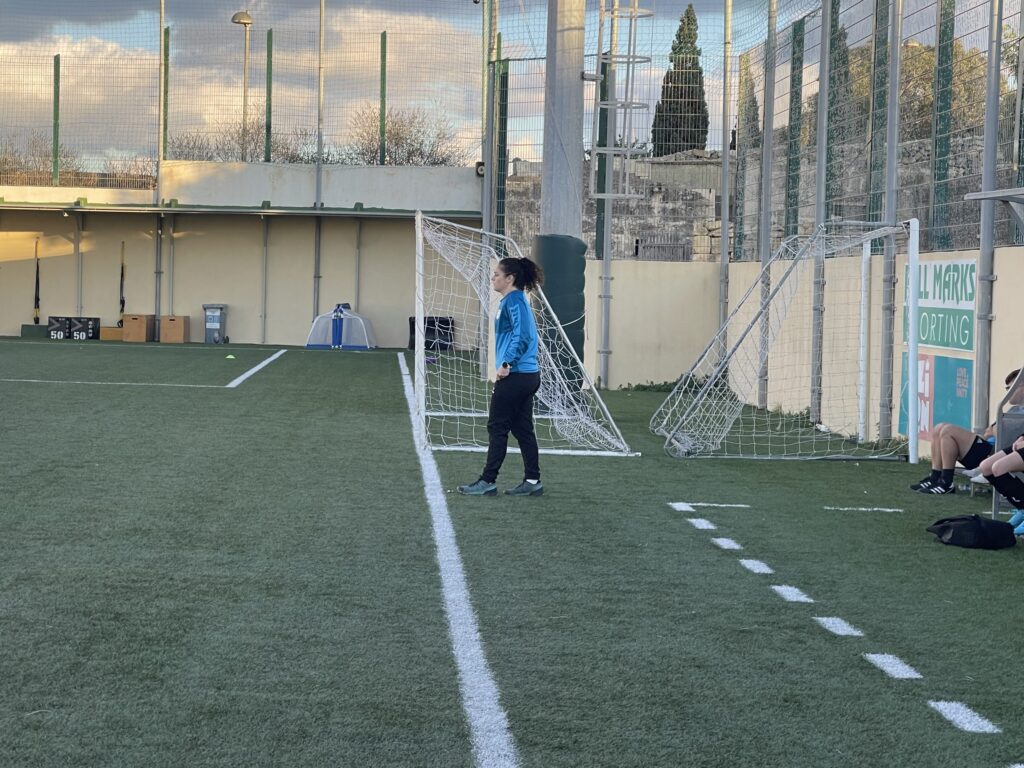
Asked about dealing with different ages at U13 level, some teams explained they are splitting their numbers into U11s and U13s, occasionally merging the two to test the levels.
For example, San Gwann’s Shania Borg explained that the side has split up its’ grassroots into two groups, U13 and U10, who train within the same session but are split according to ages.
In general, focus at this age group is more on building basic technique, control in dribbling, passing and shooting. Some introduce basic tactical elements as well. Sliema’s Fernando Patino chimed in on the importance of having fun and engaging training sessions to ensure that players remain involved in the sport.
Brooke Zarb spoke as one of those involved within the MFA academy who frequent the matches. Asked to explain their focus during attendance, she replied, “We observe matches and look at promising players from a young age. So, players who are promising are picked and train with us as a group. Over time there are re-evaluations, so that players who maybe weren’t picked initially, but improve, are also given the chance.”
Zarb was questioned on how the overlaps are handled considering that some players are being trained by club coaches and academy coaches, as well as with parents. “There’s communication with coaches at the beginning of the season. However, we let coaches do their own thing and lead their own players at club level. We also have a specific app to communicate with parents.”
Zarb acknowledged the positive aspect of having so many teams involved, including the commitment of Gozitan sides to make the trip to Marsaskala for these girls to get a feeling of the real league setup that they would face in the future.
Thoughts On The Absence Of An Impartial Referee
Questions into thoughts about the lack of an Association referee yielded various points of view, with mixed thoughts. The Association has maintained that the idea is to push players to learn the rules of the game and actively apply that knowhow during matches to fight for their rights in the game, but also respect the oppositions’ as well.
The idea is that in special rare cases where disagreements persist or evident lack of understanding is present, coaches should support the players to understand the rules, with the Venue Manager trusted to intervene only in the rarest and most profound of disagreements. Some mentioned the need to have an additional person assist the Venue Manager, since there are two matches occurring simultaneously.
Among the points in favour of not having an official referee was the acknowledgement that the idea that players should learn the element of fair play through match practice, as well as acting as a way for them to increase their understanding of the basic rules within the game. Another point that was mentioned was that it would teach players to become more assertive to maintain their point and also take responsibility for their actions.
However, some noted that at times certain rules are overlooked. Speaking with several coaches gave an impression that some coaches are favouring results instead of the overall development of the players, which is causing some concern from others. Another point that was mentioned was that it means that coaches’ attention is becoming split between checking that the rules are being observed as opposed to focusing on instructing players in relation to the technical and tactical aspects of the game.
The element of learning to respect an official’s decision was also brought into the discussion as a way to use matches to teach players. In most cases, several raised this as an opportunity for new referees to learn their trade in a quieter and less hostile environment as opposed to the U16 league.

Others lamented that players’ understanding of fouls and basic rules is still low and that the presence of an impartial referee would help to teach this in-game.
Contrarian arguments would be the idea that training sessions should include teachings of the basic laws of the game. Birkirkara’s Clayvin Camilleri saw the two sides to it, “A neutral referee would help with consistency in the game, but at the same time noted that since the results are not the aim, the presence of the neutral referee is not really necessary. I think the important thing is that we explain the rules of the game to players during training, so that they are prepared for matches and make the decisions based on that understanding.”
However, while results are not being considered to lift a trophy, some coaches expressed concern that the standing of teams in the table following the first year is to determine the top and bottom pool next season. Based on this, several suggested that the need for an impartial referee becomes important. This especially if it is counting for an entire season, which impacts a long term in a young player’s development cycle.
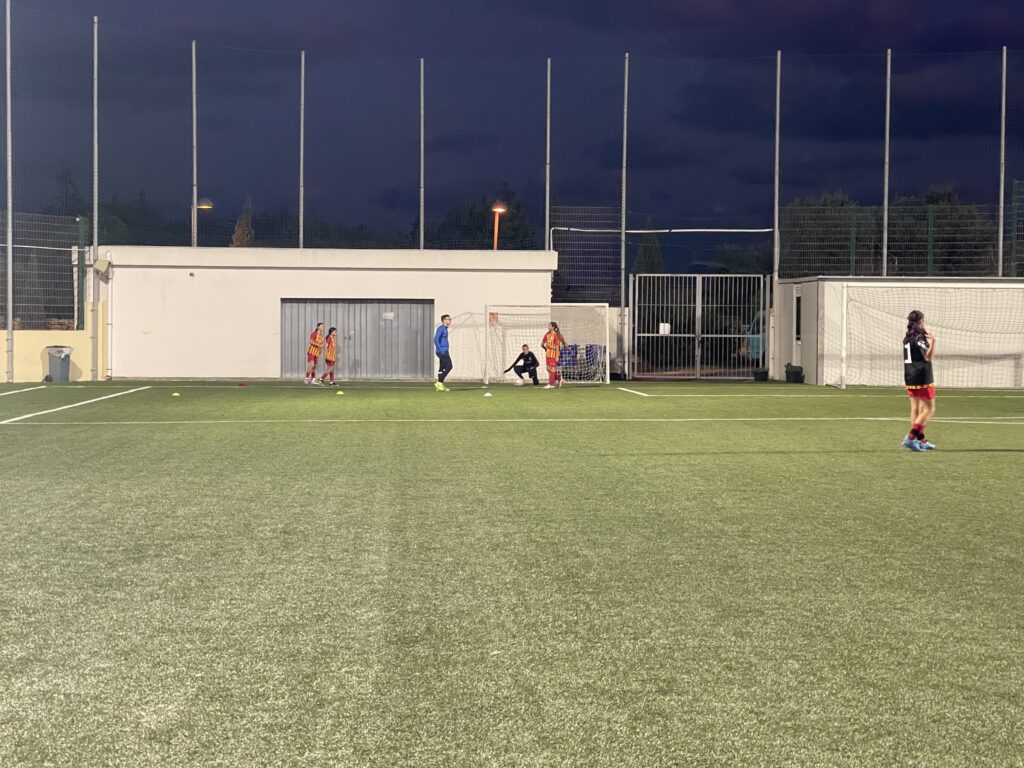
The Role Of The Parent
Several coaches praised the parents’ support in understanding their aims and letting them do their work on the pitch, while they watch their daughters participate in the tournament. However, there were also other viewpoints where coaches suggested the league should be played behind closed doors with the purpose of enabling the player to become their own on the pitch.
One element that came out was the need to adjust to the realities of different family backgrounds and the financial implications of enrolling children into the sport. Thus, dovetailing on the club’s own finances in setting up different structures for these teams, it is evident that the expenses related to enrolling a child to play football could at times impact the numbers.
Others acknowledged the parental instinct of wanting their child to improve and play more. However, they spoke of the importance of dialogue with parents to explain the importance of backing the team to grow together.
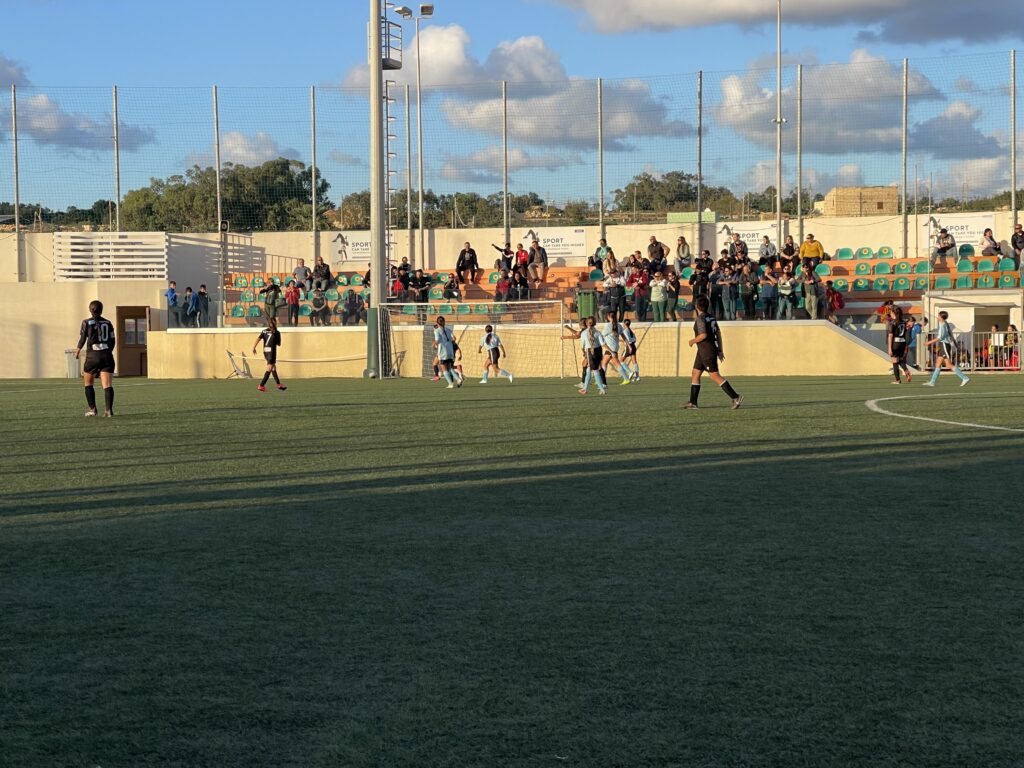
Melita’s Simon Montagno explained that he always uses the analogy that a car is driven by one driver and that the same mentality is adopted to develop a footballer. Montagno acknowledged that in most cases, as long as parents see that coaches are truly working to develop players, they are understanding.
Hibernians’ Chloe Ellul and Alexis Espitia were probed about how parents are able to help them as coaches and ultimately their children. “I think the important thing is to encourage the child. So, for example if the child is not starting, you push your child and see how you can make the child get better, rather than trying to find an easy way of just pushing for the child to start.”
Alexis Espitia drew on her own experience from developing in the USA where expenses where high and the competition for places as well, “If I look at my own time in the USA, we paid a lot of money for it. However, if I wasn’t starting my mum would look into how she could help me do extra training on the side during the week to improve so that hopefully I got closer in the level of the player who is starting ahead of me. So, I think the ideal parent is someone who is realistic about their child’s current level and pushes them to do the work to get better.”
Those interested in enrolling their child to play football are urged to contact clubs via their social medias or ask for support from the Inhobb il-Futbol Foundation at: footballgirls@iff.mt
Make sure to never miss an Assikura Women’s League match by syncing your calendar here.
Stay up to date by following The Sporting Fan on social media: Instagram ~ Facebook ~ X
